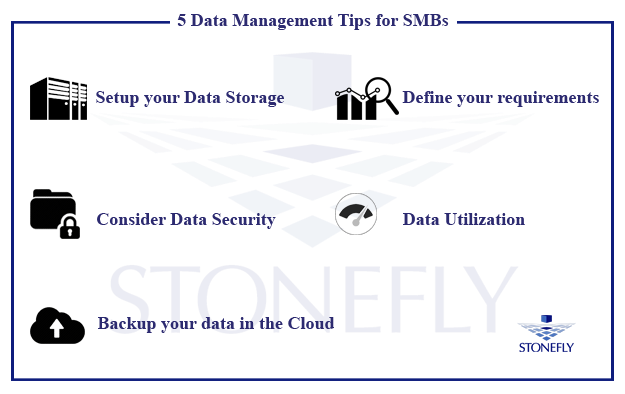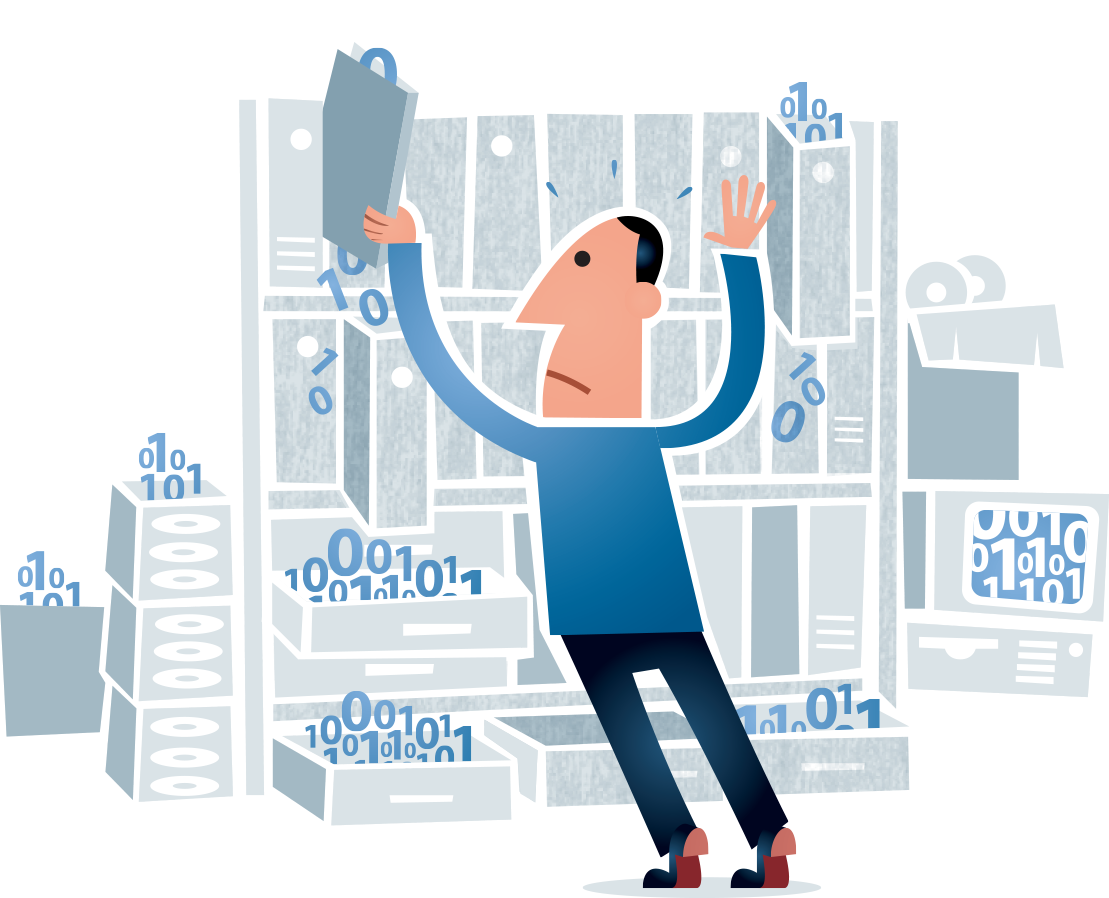It’s a common misunderstanding in the business world that only large and global corporations need to acquire data management strategies. The reality is different. This is because Small to Mid-size Businesses’ (SMB) growth potential is high. This makes acquisition of data management and cloud based services even more important.
Here are five data management tips that can help your SMB nudge into a brand new market, or send profits soaring beyond all expectations.
5 Data Management Tips for SMB facilitation

1. Setup your Data Storage
The first thing your data needs is a suitable storage solution. This is just like the cupboard that was meant to house all the files for your paper based data. It’s slightly different now because you can have a storage appliance or you can have no infrastructure at all and directly store it in the cloud. Data storage is reliant on the data and your preferred security protocols. If you have sensitive data, then it is better to store that data on local infrastructure and back it up on a private cloud.
It is essential that regardless of the solution you choose, you should keep a record of the location of all kinds of data. For instance, if you are using StoneFly’s scale-out Network Attached Storage (NAS) and using StoneFly’s cloud connect services to create copies of data on StoneFly’s private cloud; you should keep a record of where each file is and which file has been backed up in the cloud and which file hasn’t been backed up.
2. Define your Requirements
As your enterprise grows, the amount of associated data will grow proportionally. This makes a clear understanding of your data requirements very important. If you are utilizing enterprise cloud storage then you’re going to have to analyze the access frequency and necessity of data. That’s because you are charged for the amount of storage space you consume in cloud solutions. If its irrelevant data then you’re paying for no reason. Similarly, if it is data that isn’t accessed frequently or archival data and you are storing it in the high access frequency tier, then you are paying extra.
Similarly, if you have not differentiated your sensitive data and you are storing it on a publicly accessible storage; it is probably going to get leaked and cause irreparable damage to the enterprise.
The best approach is to devise a data storage policy and then revise it as you improve its effectiveness. The more effort you pour into data analysis and clarifying your requirements, the more beneficial the acquired solution will be.
3. Consider Data Security
Studies indicate that small enterprises have a higher frequency of experiencing cyber-attacks. That’s because SMBs assume that due to their scale, they do not need data security, as hackers may not see them as profitable targets. However, attackers are not just after ransom. They can steal data and use that for their monetary benefit.
For instance, if you are a small enterprise providing medical services then you probably have a lot of medical records and patient data. That is an invaluable information. They can use this data and sell it to the black market. That is why it is exceptionally important to employ security measures that can protect your data.
There is a number of software and data security providers who can help you ensure that your data remains secure.
4. Data Utilization
Data analytics are necessary in order to help you optimize your enterprise and improve your productivity and profitability. It is highly likely that most of the data you have is customer data. By analyzing this data, you’ll be able to understand the impact and utilization of your services and operations.
This knowledge is essential to help you improve your services. For instance, you can acquire sale patterns, identify your most selling product, notice the most productive sales tactics and much more.
5. Backup your data in the Cloud
You can have storage and you can analyze and efficiently utilize data now but there is little value to all of this if one day all of your data is gone and you have no way to recover it. May be your backup infrastructure was compromised, may be it was a local incident or a natural disaster; either way, if you don’t have a way to back it up all other data management is simply futile. This is the pillar that supports all your policies, strategies and the future of your operations by securing mission critical data.
Experts highly recommend using offsite backup. So you have a way to always recover, even if your entire office is physically compromised. You can restore all your data as long as you have backup solution in place. If your data is lost and there are no backups, it is gone forever.
Another recommended strategy is the employment of disaster recovery (DR) services and devising a DR plan. This way, if your enterprise does encounter a disaster, your staff knows their responsibilities and can act accordingly to secure your data and make sure that your operations remain unaffected.







